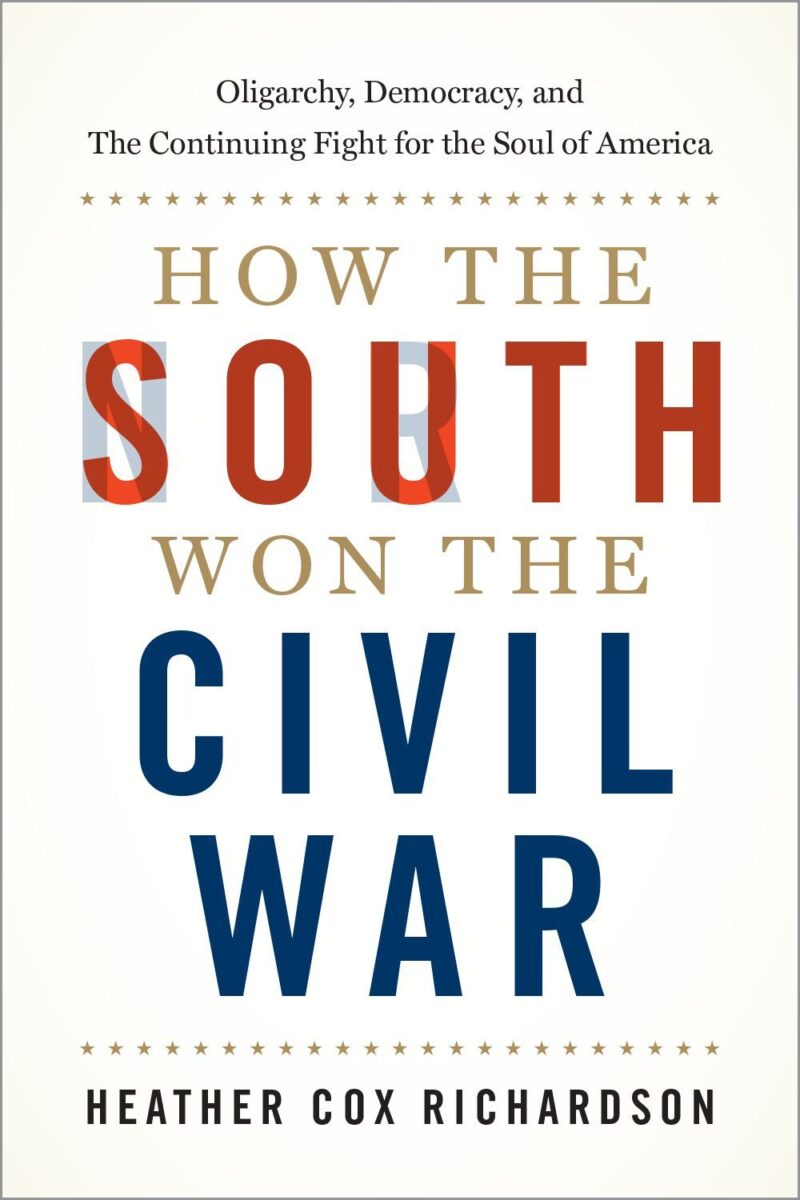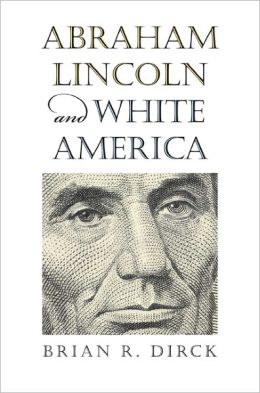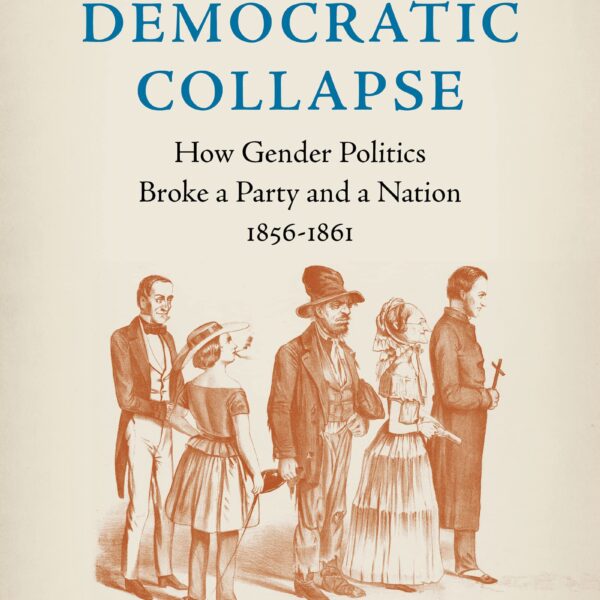At the Neshoba County Fair in 1980, Ronald Reagan “brought the South and the West together to take over national politics” (185). Reagan, wearing a cowboy hat—a regular feature of his Western attire—launched his presidential campaign in the same county where three civil rights workers were murdered in 1964. This is where he chose to declare “I believe in states’ rights,” knowing fully what it meant to say that in the state of Mississippi not even 15 years later. This moment, according to Heather Cox Richardson’s important and provocative new book, How the South Won the War: Oligarchy, Democracy, and the Continued Fight for Freedom, was near the end of the trajectory of the Republican Party. But what does it have to do with the Civil War?
Based on its title alone, one may assume that this book recounts Confederate memory and its spread throughout the nation, entering it in a well-trodden field of histories of the Lost Cause. Instead, in this synthesis work, Richardson moves us away from traditional Civil War memory studies. This book is an extension of Edmund Morgan’s classic American Slavery, American Freedom, which argued that “freedom depended on racial, gender and class inequality” (ix). According to Richardson, this founding paradox was kept alive by the Confederacy and later found a new home in the West, where it moved from the self-made mythology of the antebellum “yeoman farmer” to the mythology of the “American cowboy.” Richardson skillfully expands on the history of secession, the Civil War, and the creation of the modern West; she ties it all to our current economic and political reality.
After the Revolutionary War, and as wealth concentrated even further in the top of Southern society, slaveholders pivoted to proslavery ideology and eventually began to advocate for the institution’s expansion. Southern slaveowners “set out to make slavery not regional, but national by looking to the West” (54). She also argues, convincingly, that white Southerners saw the West as the final frontier for a society ruled by elites—and where the mythical Western individual could succeed, once again on the backs on inequality and violence against people of color. Richardson compares the equality-centered policies of Reconstruction with the birth of the modern West, a place that “reinforced a society in which the oligarchic ideas of the defeated South would thrive” (79).
White Western men often replicated the structure of pre- and post-Reconstruction Southern politics and society, and as Richardson argues, they “reinforced the dominance of a few men, rather than to challenge it” (109). Ironically, these wealthy elites drew their power from the mythologized American cowboy, the supposed self-made man on the rugged frontier. The individualistic ethos of America’s founding had found a new home in the West. Regional differences in ideas about equality, especially gender and racial equality, may be a bit overstated here, but Richardson’s arguments about the desire to reproduce the antebellum South’s race and class hierarchy come with ample evidence. Both Jim Crow and Juan Crow laws dominated the South and West by the early 20th century. Richardson notes that it was a “South-West” alliance that stopped important legislation like the anti-lynching bill (143).
One of the most noteworthy parts of How the South Won the War is Richardson’s analysis of both history and popular culture as a foundational medium for the expansion of the reconfigured self-made American. In fact, as Richardson writes, the union of Western and Confederate ideology was reflected most clearly in these stories. Both Laura Ingalls Wilder and Margaret Mitchell, popular white women authors in the early 20th century, propped up these individualistic stories of the West and South to popular acclaim through Little House in the Big Woods and Gone with the Wind. Richardson does not go in-depth on the role of the politics of reconciliation in this book, but the classic Western Stagecoach could only happen in the post-reconciliation world of the West. Only there could a former Confederate soldier and U.S. Calvary soldiers come together with the same goals against the “savage” Apaches. Stagecoach, as Richardson recaps it, is a cinematic representation of the South-West alliance.
With the backing of popular culture and a World War II era demographic shift to the West Coast, Western Republicans, like their Southern conservative counterparts, challenged the dominant liberal consensus of the first half of the 20th century. Cold War anticommunists who admired (rather than shunned) Senator Joseph McCarthy found an eager audience in the South and West. As Richardson explains, “Thanks to movement conservative ideology, Southern Democrats had begun to shift to the Republican Party. Thanks to the American West, the ideology of the Confederacy had regained a foothold in national politics” (173).
Richardson’s title, How the South Won the Civil War, serves as much as a concluding statement as an entry to a conversation about the present. Late 20th century conservatives “reached back to the history of the Reconstruction Era, when Southern Democrats insisted government policies to enforce racial equality destroyed white freedom….” They contrasted supposedly lazy black freedmen with the American cowboy who “wanted nothing from the government but to be left alone” (195), all while he reaped the benefits of the oppression of others. Admirably, Richardson does not shy away from the present and confronts the parallels between Donald Trump and the secession-minded Southerners from the 1860s.
Trump, as she notes, is a regional anomaly. Most Republican presidential nominees have come from west of the Mississippi since 1964. A discussion of how these ideas gained ground (or did not) in the Northeast after Reconstruction would have bolstered her carefully written narrative. Minor quibbles aside, this is an impressive and expansive look at the historical roots of our modern world with an emphasis on the role of wealth and political power. How the South Won the War advances the field of Civil War studies and Civil War memory beyond the history of commemoration and into the history of modern political ideology.
Dr. Ashleigh Lawrence-Sanders is Assistant Professor of History at the University of Dayton.





